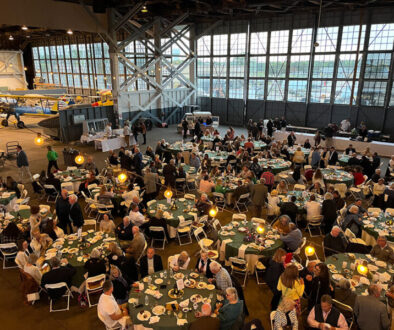Gray Tree Frogs

Summer is the season of the frog chorus, and Cape May is a great place to experience a diverse array of singers. From Spring Peepers (no jokes!) to the most recent new addition, Atlantic Coast Leopard Frog (a cool story for a future column), to the “of course I can eat that” American Bullfrog, Cape May is Frog Central. But the one that stops me (and building permits) in its tracks is the Cope’s Gray Tree Frog (Dryophytes crysoscelis). Described in 1880 by Edward Drinker Cope (a name with both “drinker” and “cope”; gotta’ wonder how that panned out), this frog is sometimes referred to as the Southern Gray Tree Frog, which, as you might have guessed, means there’s probably a northern counterpart. Ding-ding-ding! There is!
Dryophytes versicolor, or simply, “Gray Tree Frog.” Once considered a single species, the latest research suggests that Gray Tree Frog may have evolved from its more southern cousin, Cope’s Gray Tree Frog, after the last major ice age. Genetically these two have a major difference, with Cope’s Gray having two complete sets of chromosomes (haploid), the conditions most common in vertebrates, and plain old Gray having twice the typical number of chromosomes (tetraploid), a condition found in some fish and amphibians, as well as plants. You still awake!? There’s a reason I’m telling you this. This difference helps explain why, after reuniting many years after the ice age, they are incompatible at breeding with each other. Cool right? Yes, yes, it’s very cool. But, with their only major difference being genetic…oy vey, telling them apart can be a real challenge!
Lucky for us, we appear to be at ground zero for Cope’s Gray Tree Frog. While both species occur in southern New Jersey, plain old Gray Tree Frog stops roughly around Cape May Courthouse, while Cope’s Gray Tree Frog picks up there as you head south. By the time you’re on Cape Island the expectation is that all Gray Tree Frogs you encounter will be Cope’s. That statement is purposefully vague because both species are virtually indistinguishable except for by voice, and even then, they vary enough depending on temperature that cinching the ID can be difficult.

Cope’s Gray Tree Frogs spend most of their life high in the trees but move down to the edges of vernal pools during the spring for breeding. Vernal pools get their name because of their seasonal nature, filling up in the spring, but drying down in the summer, which keeps them free of predatory fish. Without this predictable dry down, these frogs, along with many other species of frogs, salamanders and even dragonflies, wouldn’t be able to breed successfully. Living on Fifth Avenue in West Cape May, I was fortunate to be surrounded by several of these wooded vernal pools, and each summer I would be visited by numerous Cope’s Gray Tree Frogs. Sometimes they’d appear on windows, other times on the hand railings of the deck, where they blended with the old, weathered wood. In many cases I heard them before I saw them, their distinctive trill broadcast out on warm summer nights, filtering through open windows. One year, a young frog took up residence just above the kitchen window, and for a month or more I could watch them hunt the bugs coming into the porch light. The frog’s body was pressed against the glass, and I could see heart beating through translucent frog skin, and the telltale yellow pigment on the inner legs that separates both species of Gray Tree Frog from other Tree Frogs (but sadly, not from each other!). One fall I saw what I could only refer to as “herds” of very young Cope’s Gray Tree Frogs moving along the trails in the woods at the Cape May Point State Park. I could tell they were young, because in their early stages they have a green back and are much slenderer. As they mature, they get completely gray with some darker mottling, fill out into stately little beasts, and have a facial expression that I can only describe as appearing very content.
A few years ago, while working at The Nature Conservancy South Cape May Meadows Preserve, I was startled in the blue port-a-john when a Cope’s Gray Tree Frog belted out a full call which reverberated throughout the plastic facility and rattled throughout my head. “Whoa buddy!” I exclaimed, not seeing the frog at first. After some searching, I found it tucked in the crease between the plastic roof and a plastic wall. Far from “high in the trees” was this frog; had they not read the manual? In any case, this frog was robust, about the diameter of a soda can and domed like someone who has been busy at the buffet. Eyes were wide and gray, a hint of yellow peeking out from their folded legs, and an air of contentness. I guess the steady supply of unsuspecting flies provided enough incentive to suffer through the frequent visits of humans. It does always amaze me where one of these buggers can turn up, and I enjoy searching for them each year, and being surprised when one finds me instead. I’m not suggesting you go searching the crevices of Cape Island port-a-potties (I mean, you do you, not judging), but I do highly recommend keeping an ear and an eye out for these little gray beauties as summer marches on; they’re definitely one more thing that makes Cape May special all year long. ■



